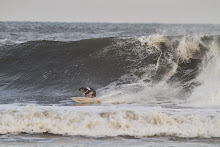
Sitting in the Catalina Express, just accelerating for Angel’s gate lighthouse, bound for Two Harbors on Catalina Island. I’m in the second week of a 10-week junket. I’m 58 years old. Experiencing the first REAL sabbatical leave of my life. Scared shitless, and excited as hell.
This ferry is REALLY fast. It is traversing my old stomping grounds, the upper end of LA harbor, turn the corner at Angel’s gate, and out to Catalina. I cut my sailing teeth here a million years ago. This express goes so fast it has to turn the 120-degree corner in a wide sweep. There’s Point Fermin to windward peeking out behind the bulge in the west breakwater. Sweeping past these landmarks that are oh-so-slow to change when sailing a boat going 4 knots. But now these points and bluffs and buoys and lighthouses move past like we are airborne. Tweeks my poor brain big time, this speed.
John and Dan will be waiting for me when I get there. These are two crazy students who have decided to forego their scholarly education for a much more wet one. I’m paying them with room and board and free air (Air is what you put into a SCUBA tank so you can breathe underwater. It costs money to do it. But for John and Dan it is free). When I arrive at Two Harbors, we will walk 80 feet to the dock where our Boston whaler (a small vessel with a powerful outboard motor that can get us where we want to go fast) is tied up. We will climb into the outboard, jet over to Fisherman’s cove, and get into our dive gear, back into the whaler and scout out a new spot to study lobsters. Hopefully we will return to the same spot tonight and do our behavioral observations. We’ve been doing this for a week now. Talking to people, scratching our heads. Where should we go? Where can we best entice a lobster into attacking a California sea hare?
We are here because of a crazy hypothesis. Lobsters are incredibly efficient scavengers. They wait till night-fall and leave their dens and forage out in the open for whatever delectable creature they can get their legs on. They pounce on their food, grab it with their front legs and stuff it into their mouth. They eat all kinds of food, mussels, worms, urchins, snails of all sorts, as well as anything dead they run across (e.g., fish or seal carcasses). Lobsters probe food items with their legs, crush them with their mouth. They are ravenous other-worldly creatures. If you should drown at Catalina Island and sink to the bottom in less than 200 feet, you would be rapidly consumed by these guys (I don’t know this for a fact, but I’d bet a lot of money on it). Bottom line, everything in the sea is their food.
Unless the food is a California sea hare. Offering up sea hares to lobsters has entertained many SCUBA divers over many years. Grab a sea hare off the bottom, and take it to the nearest hole with lobster antennae protruding, and watch the fun.
Only there isn’t any. The lobster either bats the sea hare away with its antennae, or retreats deeper into its den, or simply ignores the sea hare. Sometimes the sea hare will crawl up onto the lobster! I’ve offered lobsters sea hares many times. I know lots of people that have done this many times. Lobsters don’t eat sea hares.
Yet our hypothesis, the crazy reason we are diving at Wrigley Marine Science Center at Big Fisherman’s Cove, Catalina Island, is that maybe lobsters DO eat sea hares.

No comments:
Post a Comment